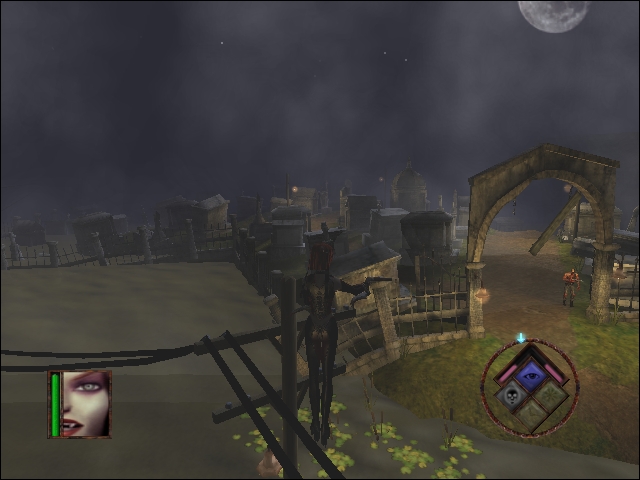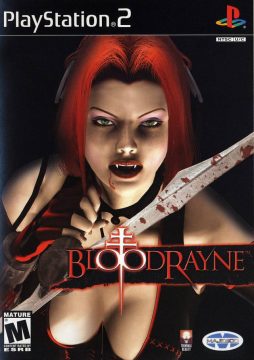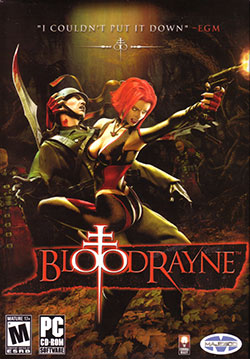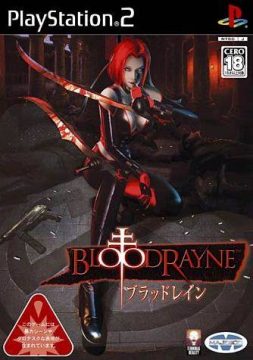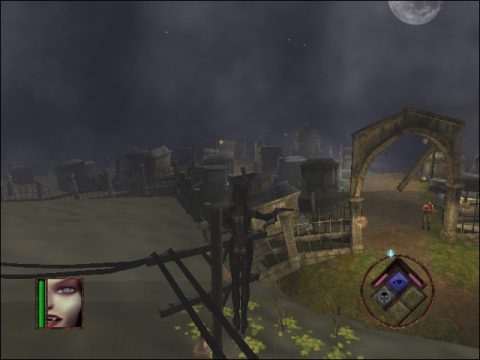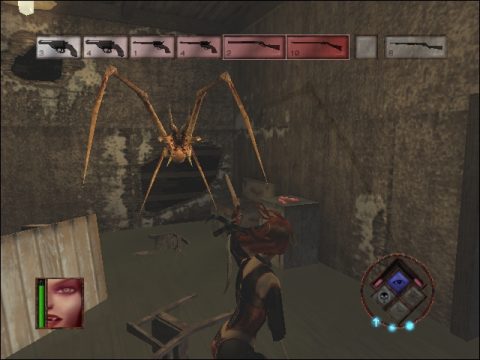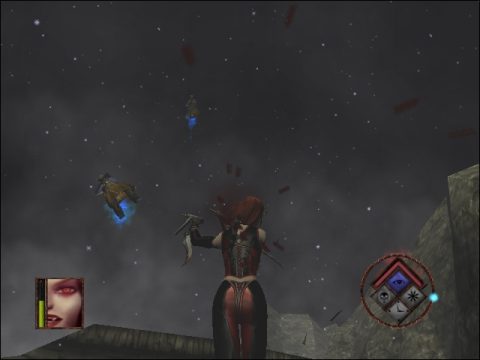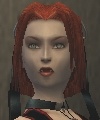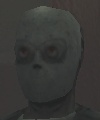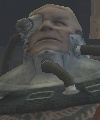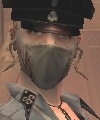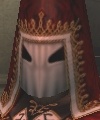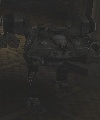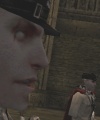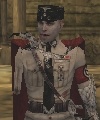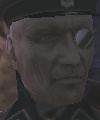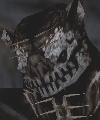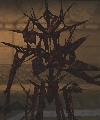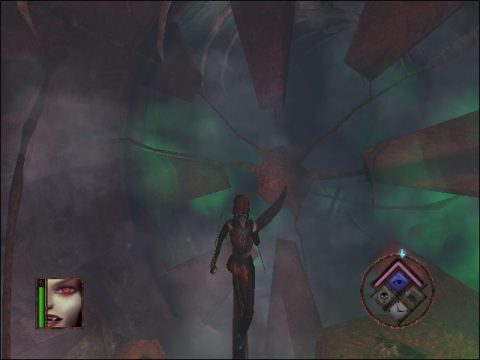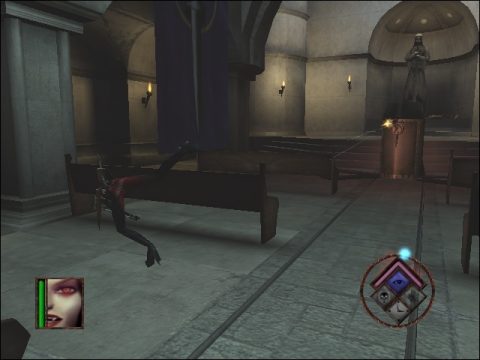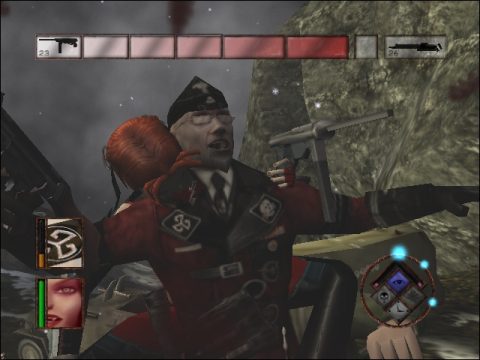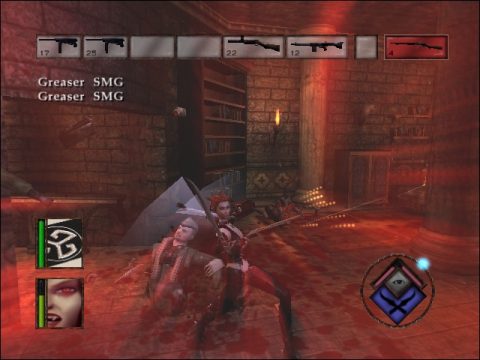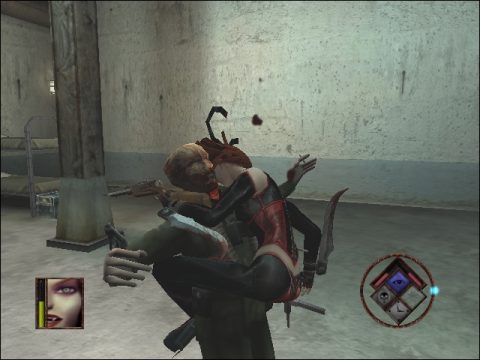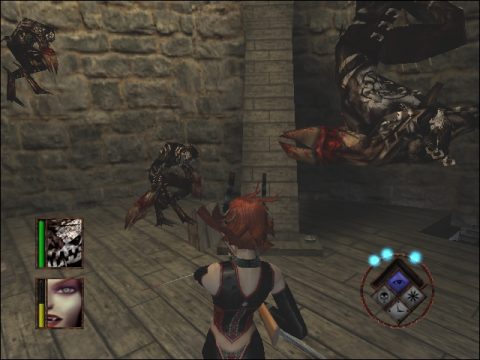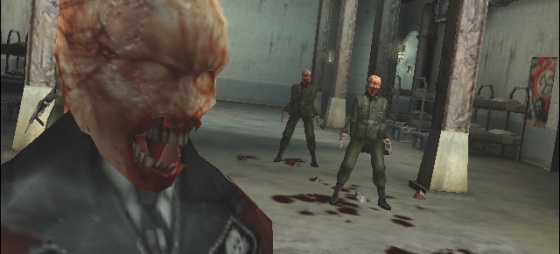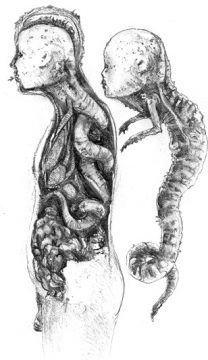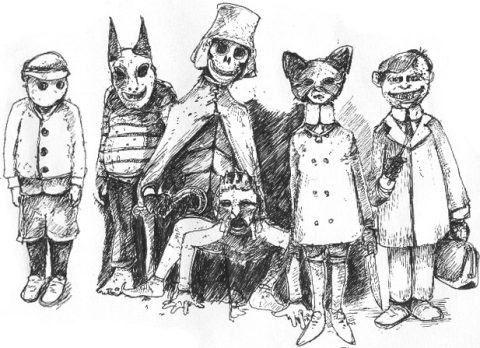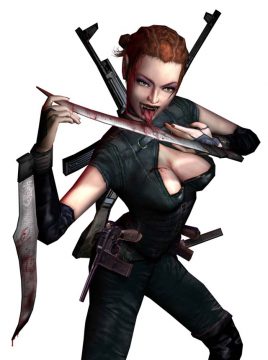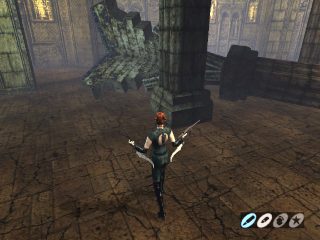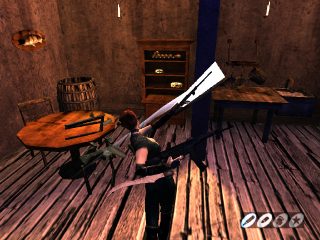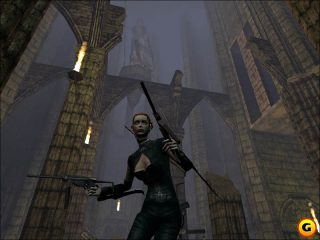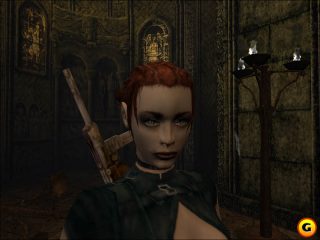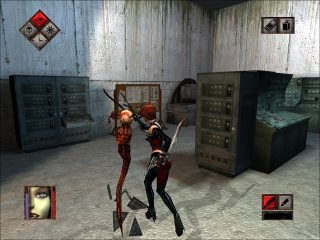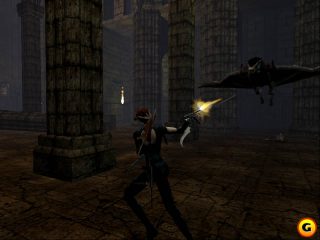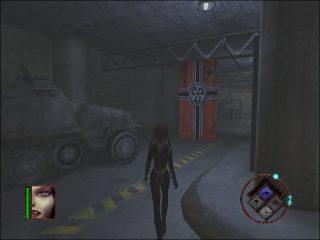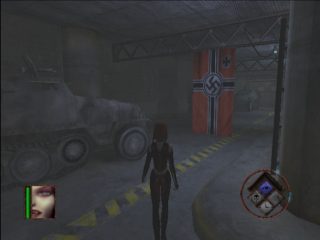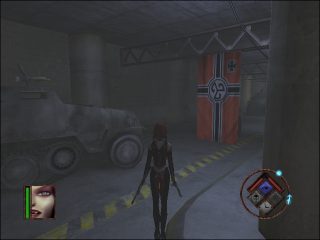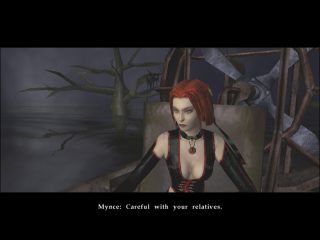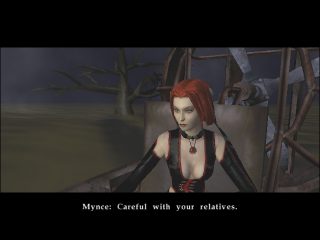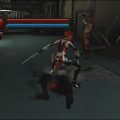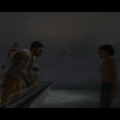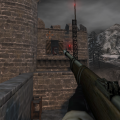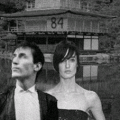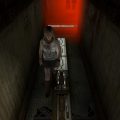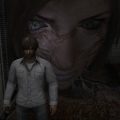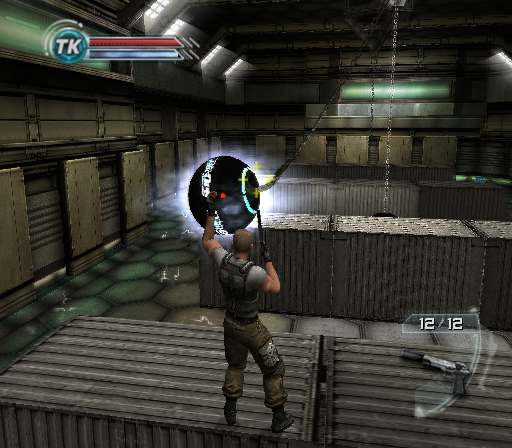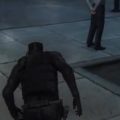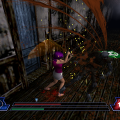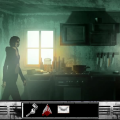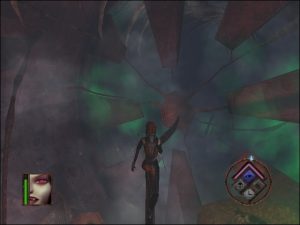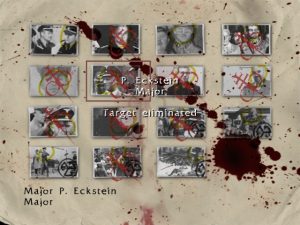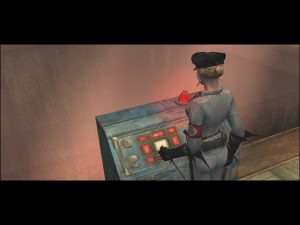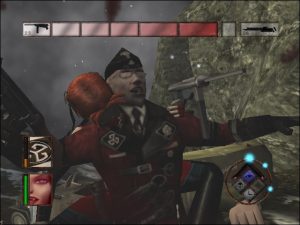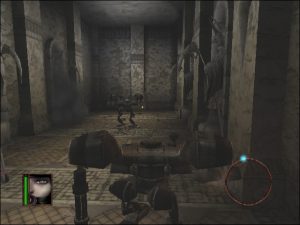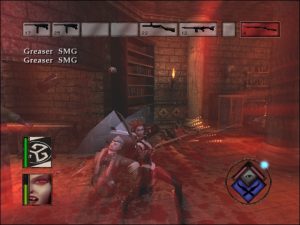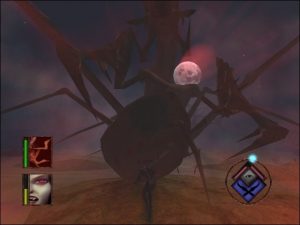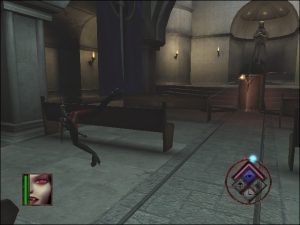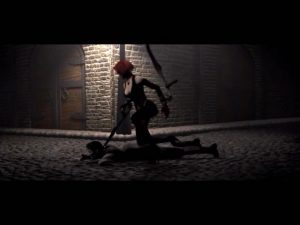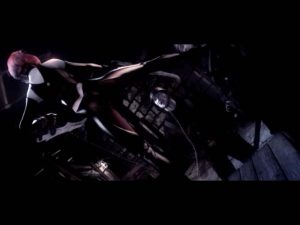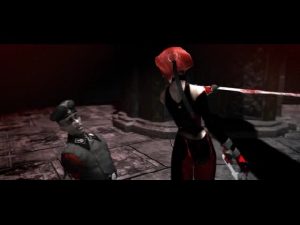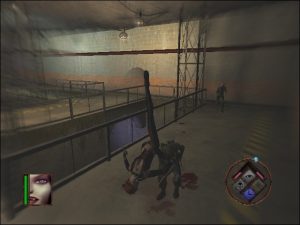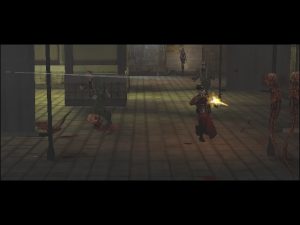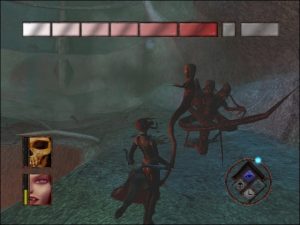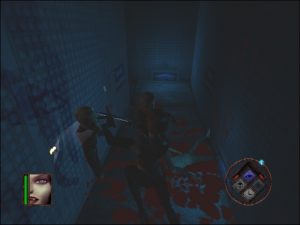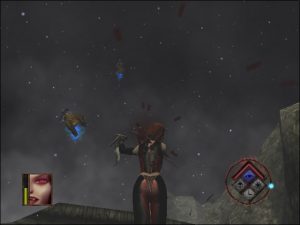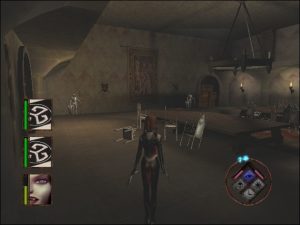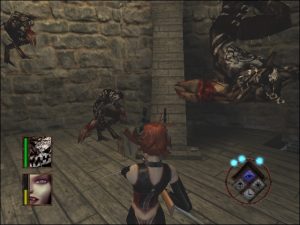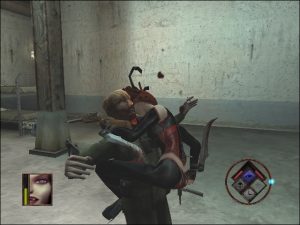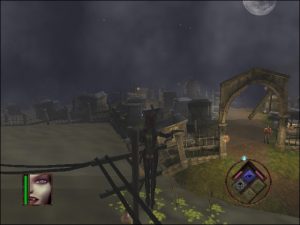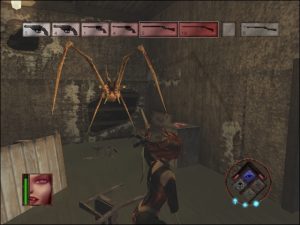Terminal Reality was a Texas-based studio who had some success with a PC horror game called Nocturne. Having partnered up with their new publisher Majesco, they reworked their initial plans for a sequel to Nocturne into something more mainstream-oriented. The new lead was a half-vampire like Svetlana from their previous game, but Rayne is a modern action hero type with a strong focus on sex appeal, whereas the Spookhouse agent had a more classic, Lugosian approach to her character. If Nocturne was a 1930’s pulp novel serial, BloodRayne would be the modern comic book or action flic; glossy, colorful, violent and sexy. Born of a time where entertainment media started to aggressively borrow each other’s aesthetics, stylistic means, BloodRayne’s professed role models where the Matrix and Blade movies, both of which themselves drew heavily from comic books and video games (not surprising in the case of Blade, which was in fact based on a Marvel character).
That isn’t to say BloodRayne had nothing to offer for fans of TRI’s first horror game. The team transported several of the cooler elements over from the Nocturne universe, like the Daemites, disgusting parasites that eat human heads and connect into the spine to take over the host’s body, or a return to castle Gaustadt and a reinterpretation of the myth surrounding it.
But first the story leads agent BloodRayne to the swamp town of Mortton in Lousiana in 1933. Here she and her mentor and fellow dhampir Mince have to investigate the outbreak of a grotesque plague among the citizens for the Brimstone Society, which effectively replaces the Spookhouse, although it appears more like a private run secret society rather than a government organization. It turns out the disease has been spread by an ancient breed of giant insectoids, called the Maraisreq. After gutting their queen, Rayne finds a strange artifact that takes possession of her eye, but a German soldier named Jurgen Wulf takes the artifact from her and nearly kills her in the process.
BloodRayne’s story is more interconnected than the mostly separate episodes in Nocturne, but still the game is divided into three distinct acts, each taking place in another location on earth. Five years after the incident in Louisiana agent BloodRayne is assigned with a kill list of officers of the Gegengheist Gruppe (German for Anti Ghost Group, slightly misspelled and slightly weird-sounding), a special Nazi SS taskforce for the supernatural. The initial targets are located at a secret base in Argentina, where Rayne again meets Jurgen Wulf, now revealed as the leader of the GGG, and finally follows him to castle Gaustadt in Germany, where the race for Beliars heart begins.
Wulf is in search of the remains of the demon Beliar, the old story of Nazis searching for supernatural artifacts. What sets the setting of BloodRayne apart from the likes of Indiana Jones and Return to Castle Wolfenstein is the slightly insane over-the-top angle and relentlessness (which has lots of potential to make citizens of cultures that have an troubling connection to the history of the Third Reich feel, well, uncomfortable), and of course the fact that the one hunting down the Nazis here is a bloodsucking domina with damn sharp blades mounted to her arms.
Anti-Heroes
Rayne
Rayne is the sexy and deadly protagonist of BloodRayne, which is also her “codename” in the Brimstone Society. The Society picked her up in Europe, where she was hunting down bloodsuckers in search for her father, the vampire lord Kagan. She’s fierce but still inexperienced and introduced into the ways of the dhampir by her mentor Mince. She shares a striking visual and conceptual similarity with the 2000AD comic book character Durham Red, although her creators deny a direct inspiration. Voiced by Laura Bailey (Japanese voice by Romi Park 朴璐美).
Villains
Kommando
The GGG’s field special ops commander. Since he always wears his mask and never talks, next to nothing is known about him. He tries to confuse Rayne with flashbang grenades.
D. Mauler
Simply described as an “Aryan experiment”. His overblown muscular body is over and over tattooed with nazi symbolism. BloodRayne doesn’t explain much the origins of its villains, but Mauler looks like he’s at least partly cyborg, and the tubes going into his head and neck hint at some substance gauged into his organism, similar to the Batman villain Bane (Japanese voice by Kiyoyuki Yanada 梁田清之)
Dr. Bathory Mengele “The Butcheress”
The psychopathic, blood drinking doctor is the leader of the fictional nazi concentration camp in Argentina. Her name is taken from the real life 16th century Hungarian countess Elizabeth Báthory, accused for serial murder and (in later days) cannibalism, as well as the concentration camp physician Josef Mengele, who shocked investigators after World War II with his gruesome “medical” experiments enacted on living concentration camp prisoners. (Japanese voice by Eri Saitou 斉藤恵理)
Oberpriester Von Blut
To not leave out any Third Reich cliché, Von Blut (“of Blood”) completes the round as a high priest of the “Thule Society”, a group who tried to trace back Aryan origin to an ancient Thule, supposedly a lost island like Atlantis. He attacks Rayne from a pulpit-turned-turret. (Japanese voice by Katsuhisa Houki 宝亀克寿)
Generalstabsuberpanzer G. Gosler
There’s not much characterization to the leader of the super tank (=mecha) division. Like some of the stock officers of the GGG, he is named after a staff member on the game, Grant Gosler, who did “Additional Art” according to the credits.
The Doppelganger Twins
Identical twins born by experimental means. Both are missing an arm, suggesting they were born conjoined and then later separated, although that is never made explicit. They still remain linked together in a supernatural way, since damage dealt to one of them also hurts the other. Contrary to most of the other GGG members, the twins are very polite and respectful towards Rayne, almost courting her even after they start fighting. Given that the aforementioned Dr. Mengele was obsessed by twin studies, it’s no hard guess how the idea for these two came to be. (Japanese voices by Rintarou Nishi 西凛太朗 and Shirou Saitou 斉藤志朗)
Jurgen Wulf
A former WW1 war criminal, Wulf is the supreme leader of the Gegengheist Gruppe. On the search for the remains of Beliar, he encounters Rayne and nearly kills her. Since he has several parts of the demon already absorbed into his body, he is incredibly powerful despite his age. (Japanese voice by Norio Wakamoto 若本規夫)
Hedrox
Hedrox is a special breed of feral vampire. He cannot be killed because he’s “infinite”, as he himself puts it, which means that he grows back any body parts cut from him, while the parts themselves grow into a complete new body. All bodies of Hedrox share a collective consciousness. He, too, is looking for Beliar’s heart to make himself (themselves?) ultimately immortal. Voiced by Dameon Clarke.
BloodRayne drops almost all of the adventure elements of its spiritual antecedent, non-stop action is the order of the day. Three control schemes can be chosen, the only useful one is ironically named “1st person”, despite the over-the-shoulder perspective used in the game, which makes the game control just like an FPS. Rayne’s major weapons, however, are no kind of gun but her twin blades, which she uses in combination with several other melee attacks (to be learned over the course of the game). Ranged weapons are literally a throwaway alternative, as Rayne takes just whatever she finds on her enemies and quickly disposes of it as soon as she runs out of ammunition. There are more than 40 different guns in the game, although most are just insignificant variations of the two types big machine guns and small revolvers. More variety offer the grenades and special weapons, which range from shotguns to bazookas, but Rayne can only carry one of them at a time.
So far BloodRayne would be little more than a generic action game. Things get more interesting when Rayne does what vampires do, first and foremost bloodsucking. Instead of employing health packs, Rayne regenerates by feeding on her enemies. This is by no means as tedious a task as in, say, Blood Omen 2, because Rayne is always in danger of being ambushed, capable to use her enemies as human shields and even fire from her position, although aiming is rather difficult in that case. Even farther away enemies are never save, as Rayne carries a harpoon to drag anyone right to her. Generally all humanoid enemies can be abused for an involuntary donation, although Nazi officers have a tendency to block Rayne’s “advances” and have to be bitten from behind. Given the speed of gameplay, this is not an easy task, so luckily the sexy bloodsucker has even more tricks up her sleeve.
Besides vampiric healing and super high jumping ability, most special powers alter perception. Aura Sense is kind of a infrared-like vision, which highlights living creature according to the strength of their life signs, but also current objectives, as unscientific that might sound. Dilated Perception slows down every movement – this was the time when game designers just had adopted bullet time from The Matrix and the feature saw much (over)use – which is essential to get behind blocking enemies, get some orientation over the otherwise insanely fast gameplay and of course dodge bullets. Extruded View finally is a glorified sniper mode and the least viable, for combat is almost always intense and more often than not takes place in close quarters.
German Fun Fact
BloodRayne was never officially released in Germany. Irony would have it, though, that all European Xbox versions were produced there. Now the depiction of the swastika outside of educational context and art (which by German legislation doesn’t apply to video games) is a punishable crime in Germany.
This might have been the reason for all swastikas to be removed or replaced with the sign of the GGG. (Well, not all of them. A few got overlooked.) The PC version, underwent the same changes world-wide, while on PS2 and GameCube all graphics are intact even in Europe.
A detailed comparison can be found at schnittberichte.com.
More useful and downright deadly is the Blood Rage, meant to simulate Rayne’s vampiric instincts go apeshit. It is in fact almost too deadly, as almost any foe getting in the way is turned a mere victim, thus its use is limited and requires charging a rage meter through melee combat. During the rage, everything blurred under a reddish filter, and it takes mere seconds to not only kill a whole squad of enemies, but to literally tear them to pieces.
Suffice to say that the happenings on screen are depicted ever so gruesome. BloodRayne inherits most of the physics features of the Nocturne engine, thus limbs and other body parts can and will get severed at almost any joint of the character model, multiplying the intensity by the now more immediate perspective and the more manlike depiction of the Nazi soldiers as opposed to Nocturne’s Zombies and Werewolves, whose painful screams for help while Rayne is sucking them dry is almost stuff to haunt dreams. Wouldn’t it be for the sequel raising the gory bar even more, one would be quick to call BloodRayne one of the most violent games ever made.
On the other side of the spectrum as far as “mature content” goes, BloodRayne shows no remnants of the blunt nudity the older game was notorious for, despite heavily playing on the sexual and seductive nature of its female protagonist. The developers were concerned enough to counter Rayne’s inherent sex appeal and to prevent things becoming “crude and vulgar, an unnecessary distraction from the game itself” in this way, so Jeff Mills. Not that Majesco as a corporate publisher likely would have waved through anything as explicit as GoD did get away with, anyway. It is not surprising, however, that the fans took care of this “issue” as is done to a lot of female video game characters, from Lara Croft to nameless villagers in Morrowind, by stripping Rayne from some or all of her attire via modified textures.
It was director and character designer Joe W. Jing’s declared aim for Rayne “to be empowering,” which is an objective achieved with flying covers. The Nazi soldiers really are at her mercy, and since she can abus any of them for regeneration, things turn quickly into a slaughter rather than a battle. The monstrous enemies are a bit tougher, and especially those pesky Daemites are annoying as they even survive when their human host is torn into pieces (and dangerous as soon as there are no humans for blood donations left), but ultimately they can only get to Rayne in huge quantities. With the exception of Blood Rage, there’s no limit to special abilities, so nothing (save for simple boredom) prevents one from playing the entire game in slow motion, either. The bosses are more challenging, but while some require a certain strategy to beat, with others it’s just hacking away in hope the Blood Rage meter gets filled soon.
If the enemies most of the time don’t stand a chance on their own, it’s the environment that brings hope to their case. As a dhampir, Rayne gets hurt when she comes in touch with water, which is exactly what most of the first act consists of. Later stages are hazardous in their own way, and entertain a habit of putting the player in a bad situation where it becomes difficult to properly deal with the masses of foes. The stage design in general makes the game feel more difficult than it is, and even fairly linear areas sometimes seem like mazes. Sometimes one has to tear down walls with a Rebound Kick, find keys or similar triggers to go on, but those are mere distractions, as the locations to go to next are always on the radar.
A low polygon count, the somewhat blocky architecture that goes with it, and the occasional low quality texture might make BloodRayne look outdated now. At the time of its release, however, it was a fairly good-looking game. Effects like animated cloth (though not given as much spotlight as in Nocturne), colored fog and the different filters for visual powers were still fresh and uncommon enough to make the graphics stand out. The stages also hold a lot of destructible objects, some boss rooms in particular are set up so they get trashed completely during the fight. (One of them very much reminds of the famous foyer scene in the first Matrix movie).
BloodRayne was released for every major platform in its time. The PC version, naturally, looks best, with additional reflections and bump mapping. The latter one is at least partly retained on the Xbox, but that version already suffers from less detailed textures due to the limited memory home consoles have to work with. PS2 and Gamecube had to endure further recessions, especially since neither supports bump mapping. Otherwise, these versions look fairly similar.
What made people remember BloodRayne, however, is not the technical knick-knack, nor the decent but slightly flawed mechanics. The appeal lies more in the morbidity in everything inside. Heartless Nazi soldiers fighting brainsucking demon parasites – who dance in ecstacy when set on fire, as if to proof that they came straight from hell – enemies that have been subjects in grotesque experiments, a Borg-style shared mind vampire collective … and in the middle the sexy dhampir, hacking the limbs from all of them. If everything wasn’t so comic book over-the-top exaggerated, some content could almost be offensive. However, it’s all in good fun when Rayne seizes a Nazi mecha to decimate the special super tank division, flirts with her foes in a semi-sadistic attitude, or is threatened by daemites with silly one-liners. “I’ll wear you like lederhosen.”
The voice acting accordingly is just as over-the-top (many cast members have had Dragon Ball experience) with really fun chemistry at work between Rayne and the GGG leaders. Surprisingly enough, the PS2 version of the game made it to Japan, published by EA, no less. It wasn’t even just a quick and cheap release, so something must have made the game interesting for the Japanese market. EA had a short manga drawn for promotion, and the game was fully re-dubbed in Japanese, with for the most part quite renowned anime voice actors. The result is at least as good as the English voicework, but very different in tone. Listening to both dubs side by side provides an interesting example on how much the voice acting can influence the impression a game gives.
Removed Content
The connection between BloodRayne and Nocturne has always been a rather intriguing and mysterious one. Do they take place in the same universe? Is Rayne a retconned Svetlana? After all, both Dhampir use the same type of blades. Furthermore, Lynn Mathis voicing one of the hooded figures of the Brimstone Society, has led many to assume The Stranger under the hood.
The truth is, BloodRayne started out as Nocturne 2, but since TRI wanted to maintain the rights to their baby, they created BloodRayne as kind of an alternate universe that they could surrender to their new publisher, Majesco, instead. In an early build of the game, Rayne (or was it still Svetlana?) even wore an outfit identical to Svetlana’s attire in Blair Witch Volume One. In the final game, Mince mentions a half-sister of Rayne’s, which could either allude to Svetlana, or simply any other daughter of vampire lord Kagan. Lynn Mathis is also not the only reoccurring voice actor, as TRI has a habit of re-hiring voices they like for other roles. Mary Beth Brooks, for example, lent her voice not only to Mince, but also the lounge singer in Nocturne’s Chicago episode.
Before the game was released, the official home page also contained a number of sketches showing a bunch of morbid child-like figures, which look like early 20th century Halloween costumes and would have fit the overall tone of Nocturne better than that of the BloodRayne universe. They belonged to a whole additional episode that was scrapped during the early stages in development, as Jeff Smith revealed in our interview.
